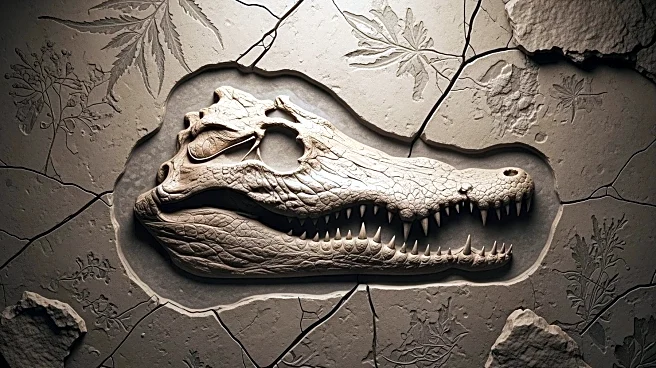What's Happening?
Recent discoveries in Wyoming have provided new insights into the Edmontosaurus annectens, a duck-billed dinosaur from the Cretaceous period. Initially discovered in 1908, the skeleton was covered by scaly skin imprints, offering a glimpse into its appearance.
A team led by Paul C. Sereno revisited the site and uncovered two more mummies, revealing detailed features such as scale size and tail spikes. These findings challenge previous artistic interpretations and provide a more accurate depiction of the dinosaur's anatomy.
Why It's Important?
The discovery of these mummies enhances our understanding of dinosaur biology and evolution, offering a clearer picture of their physical characteristics. This research contributes to paleontology by refining historical depictions and correcting misconceptions about dinosaur anatomy. The findings may influence future studies on dinosaur behavior and ecology, providing a foundation for more accurate scientific models.
Beyond the Headlines
The study highlights the importance of revisiting historical sites with modern techniques to uncover new information. It underscores the evolving nature of scientific understanding, where new discoveries can reshape established narratives. The research also emphasizes the role of interdisciplinary collaboration in advancing paleontological knowledge.
















